Snake AI
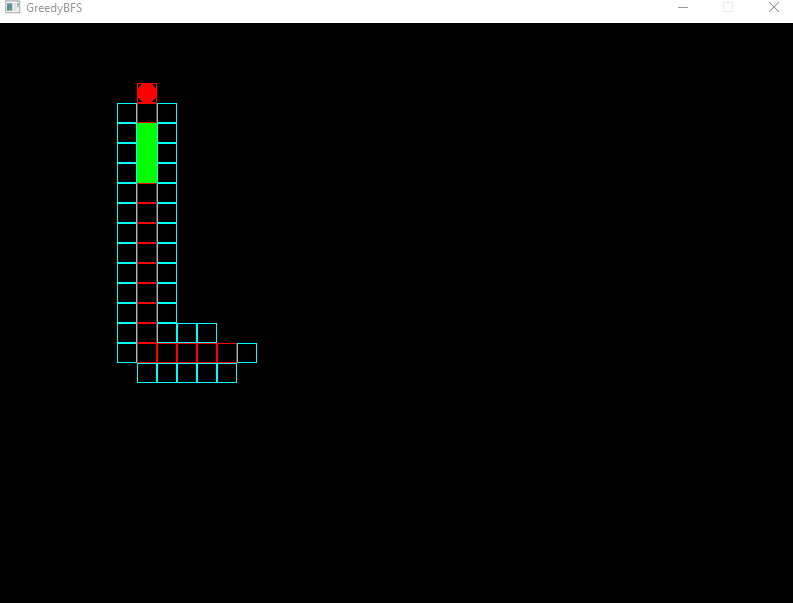
Summary
Overview
This project showcases several pathfinding algorithms which I implemented for the sake of automating a game of Snake. I wrote the game in C++ using the FLTK library for graphics and user input. The following pathfinding algorithms are included:
- A-Star
- Greedy Best-First Search
- Breadth-First Search
- Depth-First Search
Legend
Each algorithm's search is drawn on the game field with the following color scheme:
- Blue: Nodes which have already been explored (closed set).
- Cyan: Nodes which are currently being explored (frontier/open set).
- Red: The path selected by the algorithm.
Algorithms
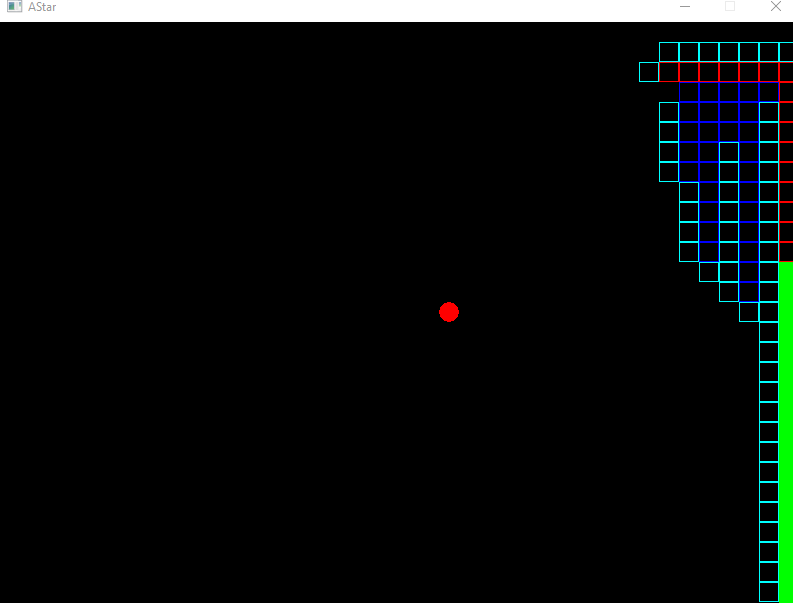
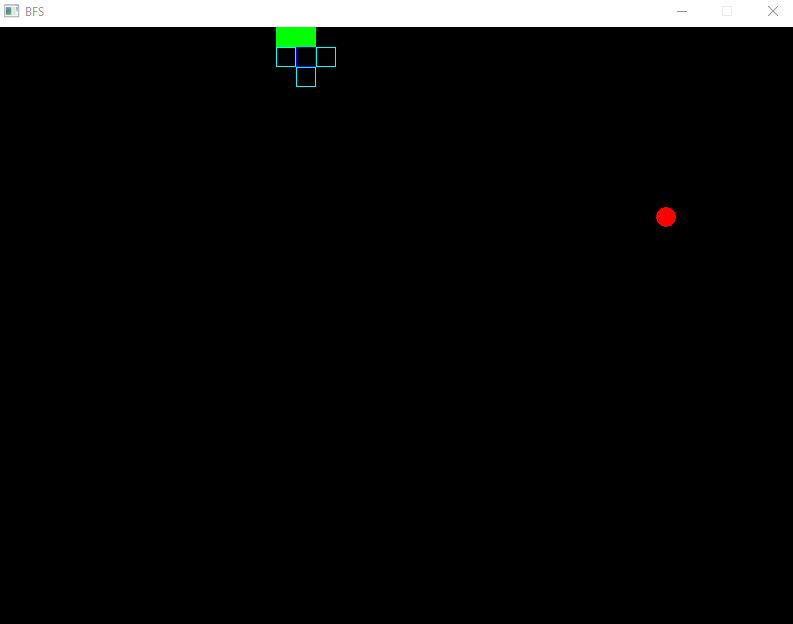

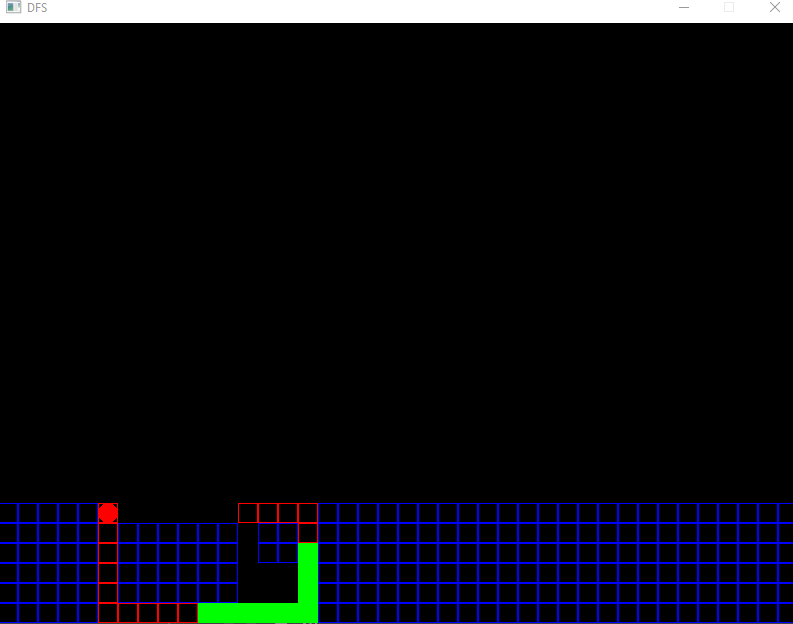
Continuous Search
After testing each algorithm for a while, I noticed that paths became more and more convoluted as the snake grew in length. This is because the snake's body becomes a moving obstacle for the algorithm to path around - the path it initially finds may become suboptimal as the snake's body moves out of the way.
To solve this issue, I added the option of re-running the path search on each frame. This allows the snake to re-evaluate its path as its body segments move, leading to better (shorter) paths at the expense of a lot of extra computation.
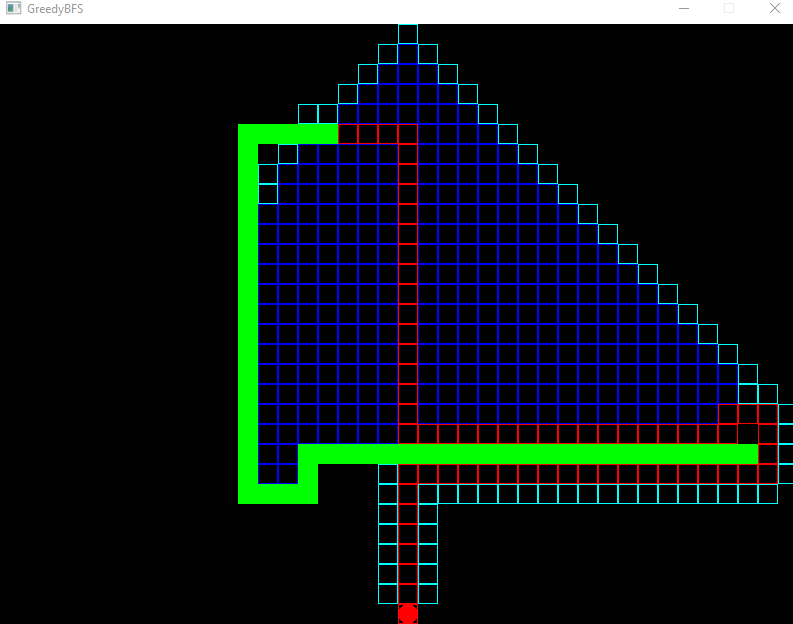
Statistics
The program tracks various statistics about each run in order to allow for easy comparison of the different algorithms. This gives a better idea about the time and space complexity of each search and allows you to weigh the pros and cons of different shortest-path algorithms.
Compiling & Running
If you're using a Linux-based OS, check out the repository and use the included makefile. For Windows, follow these directions with the source code from the repository.
The above options work as follows:
- Time Step (Seconds): The length of each frame in seconds (default 0.05).
- Screen Width (px): The screen width in pixels (default 800).
- Screen Height (px): The screen height in pixels (default 600).
- Search Algorithm: The pathfinding algorithm used to guide the snake (default A-Star).
- Repeat Search on Each Frame: Toggles whether or not to re-evaluate the snake's path on each frame.
Remarks
I wrote this at a time when FLTK was the only graphical software I knew how to develop in. This library is not a great choice for this sort of work since it's actually a GUI toolkit (the snake segments are actually styled UI boxes!). A more relevant library such as SDL2 would have been a more reasonable pick. Hindsight is 20-20!

